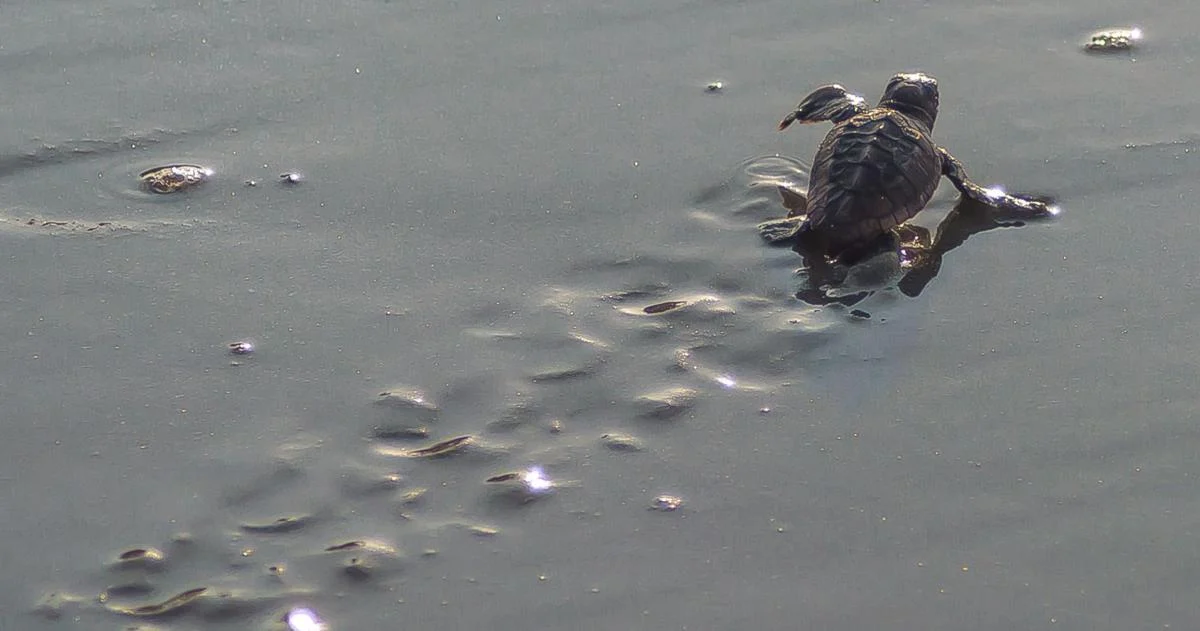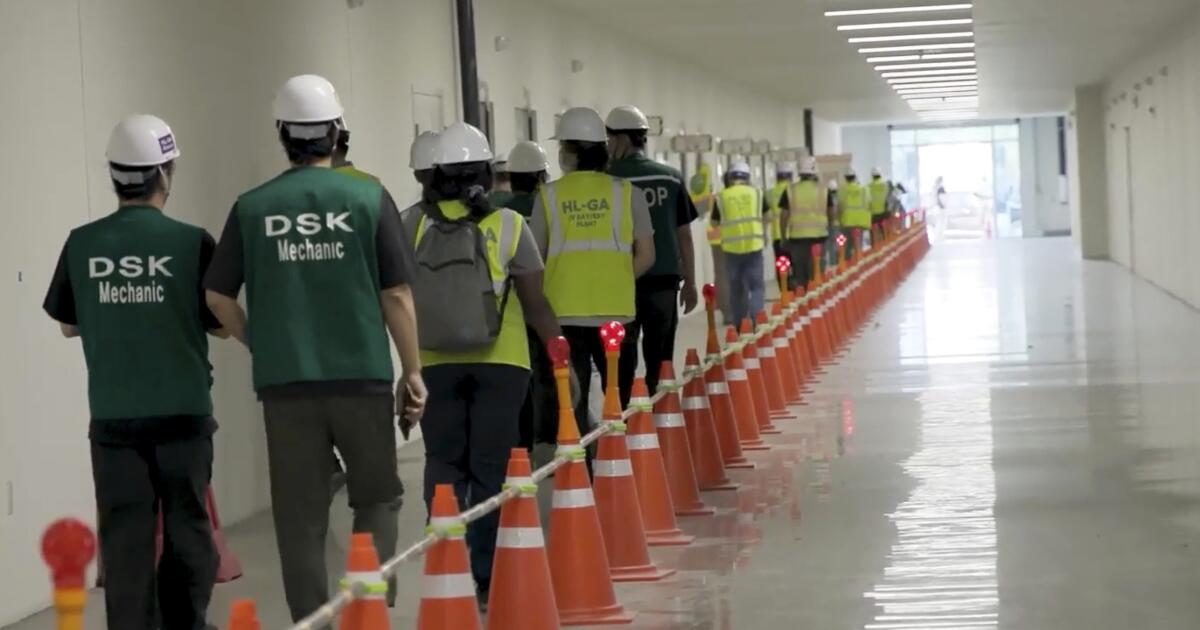
So far this year, some 90,000 loggerhead turtle hatchlings have emerged from their sandy nests on a pair of beaches located within the Cape Romain National Wildlife. And this wasn’t even a great year as nesting seasons go.
The 66,000-acre refuge, located near Awendaw in Charleston County, is by far the hot spot for turtle nesting in the state. It’s beaches and coastal waters play a critical role in the marine reptiles success along the Palmetto State’s coastline.
Two beaches with the federal refuge, Cape Island and Lighthouse Island, consistently play host to the greatest number of loggerhead nests in the state. The website seaturtle.org calls Cape Island “the most significant loggerhead nesting beach north of Cape Canaveral with an average 1,000 nests per season.”
The 1,602 nests recorded in the refuge this year account for more than half of the 3,091 loggerhead nests in South Carolina.
While getting 90,000 hatchlings off the beach and into the sea is no small achievement, the 2025 season did see the third consecutive year of declining nests and hatchings in Cape Romain and on other beaches up and down the coast.
An off year, but not awful
Sea turtle productivity runs in cycles that generally last three years. The last peak occurred in 2022, with numbers declining the following two years. Expectations going into 2025 were optimistic for a bumper crop of loggerheads.
“Everybody back in the beginning of the 2025 nesting season was like, ‘This is the year. We’re going to have to work hard this year,’’ said Chris Crolley with the Coastal Expeditions Foundation, which monitors sea turtle nesting activity in the Cape Romain refuge.
Those expectations never came to fruition. Statewide, the number of nests were down by 36 percent compared to 2024.
“The up year that they were predicting just isn’t what the turtles thought,” Crolley said.
If there’s a silver lining to be found, it could be this. While the number of hatchlings tumbled compared to last season, the decline was less severe than the reduction in the number of nests. Last year’s weather may have played a role in that result, said Kim Ritchie, associate professor in the University of South Carolina Beaufort’s Department of Natural Sciences and the director of research for Pritchards Island.
Ritchie, along with students and volunteers, monitors nesting on Pritchards Island, a 2.5-mile-long barrier island south of Fripp Island. Owned by USCB since the 1980s, the island is in mostly natural state and has seen very little development, unlike many of its neighboring islands.
The island bucked the 2025 trend and recorded marginally more nests this year than last. But notably, the number of hatchlings more than doubled, according to the most recent data.
Tropical Storm Debbie struck in early August 2024, bringing days of incessant rain that drowned many early season nests.
“It’s so much better this year. We have more nests, but didn’t have a storm that destroyed a lot of nests like we had last year,” said Kim Ritchie.
Shifting sands
Female turtles take somewhere around 30 years to reach sexual maturity. Once they do, they nest every other year, or so and will nest multiple times within the season at two week intervals. Data collected from around the state shows that an average clutch contains 116 egg and they’ll incubate for about 54 days before hatching.
It’s not uncommon to hear the trope that turtles return to the beaches where they were born to nest. While that does happen, it’s nowhere near an absolute truth.
Site fidelity is a concept that refers to a turtle’s predilection for nesting on the same beach. Genetic testing done primarily by Brian Shamblin, an associate researcher at the University of Georgia, has proven that site fidelity varies widely from turtle to turtle.
“Most females are nesting on more than one island, even the ones that do have strong site fidelity,” Shamblin said.
While female turtles drag themselves onto beaches to nest, male turtles only feel sand under their flips once, during their trip from the nest to the sea.
Movin’ on up
Turtle conservation efforts have taken the form of public education and campaigns to keep beaches dark. Cages are sometimes placed over nests to discourage predators. But, according to Crolley, the single most important factor in reducing hatchling mortality has been relocating nests away from areas susceptible to inundation by ocean water during storms or even normal high tides.
The effort to move nests is critically time dependent. On Cape Romain beaches, crews arrive by boat before dawn in order to reach the nests as soon as possible after they’ve been deposited by the mother turtles.
“You don’t want them to sit around. After the eggs have been in their situation for a certain amount of time, it’s harmful to move them,” Crolley said. “The effort is seven days a week, and it’s wilderness with a capital W out there.”
Further down the coast, every turtle nest on the north end of Hilton Head had to be moved this year. The nests weren’t just repositioned a few yards inland, but were moved to an entirely different side of the island. A beach replenishment initiative required the wholesale transfer of nests from one beach to another, explained Amber Kuehn, director of the Sea Turtle Patrol on Hilton Head Island.
“We had to move everything off the north end to accommodate that construction,” Kuehn said. “That’s a scenario that only happens every eight to 10 years.”
The Coastal Expeditions Foundation, working with the U.S. Department of the Interior, S.C. Department of Natural Resources and a dedicated group of volunteers, has been monitoring sea turtles on Cape Romain for 30 years. That’s long enough that the first hatchlings the group helped protect could now be producing their own offspring.
“That’s the great yelp of victory for those that have dedicated their lives to turtles. The work has come full circle. It’s the slight persistence over time yielding exponential results,” Crolley said.
Hope springs eternal
Approximately 229,000 hatchlings made it off South Carolina’s beaches this season. In the water, they are vulnerable and a tasty meal for waiting predators. Most of them will end up in the food chain. Still, a couple of hundred of them will reach maturity. For an off year, that’s not so bad, Crolley said.
People in the business of monitoring South Carolina’s sea turtles are already thinking about what next year’s crop of loggerheads could look like. If early predictions for the 2026 season come to pass, the number of hatchlings could double this year’s batch.
“I’m not a betting man, but I’ll predict this. I think next year will be the year that breaks all the records on all islands, on all beaches. We’re due,” Crolley said.



